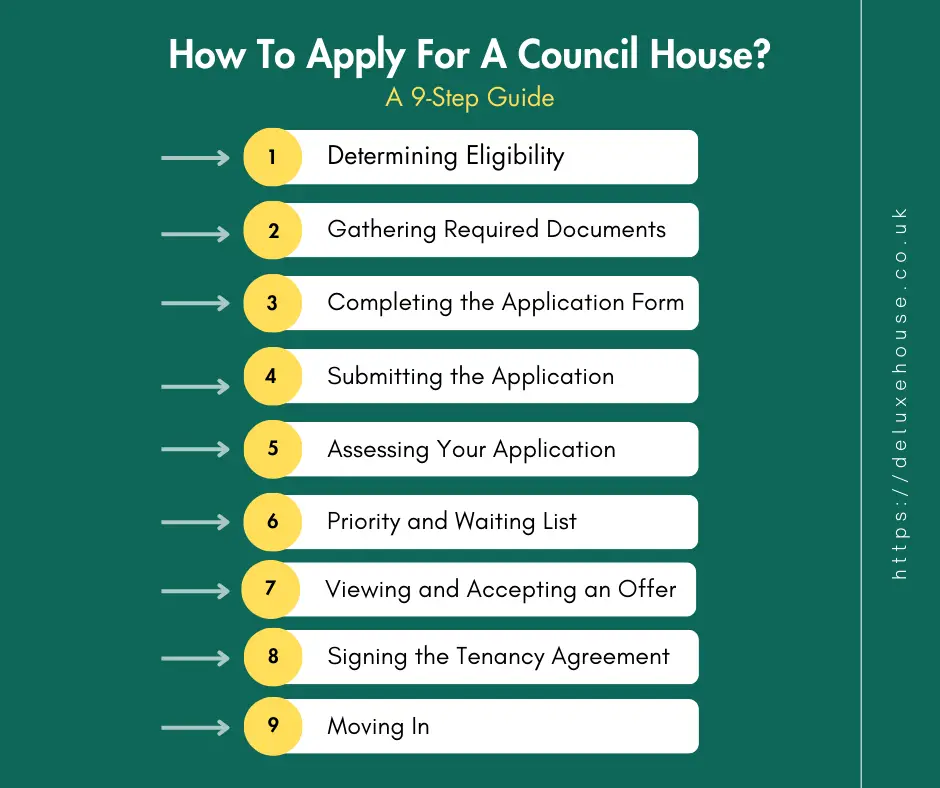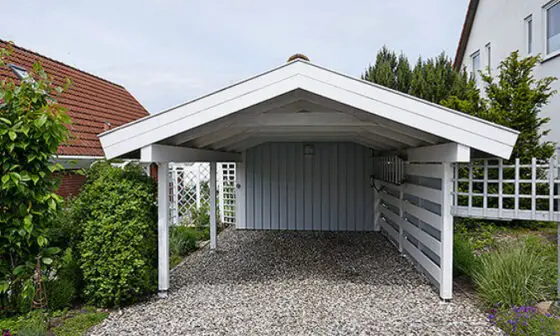The process of applying for a council house can be overwhelming if you’re unfamiliar with the steps involved. In this comprehensive guide, we will walk you through the entire process of how to apply for a council house.
How to Apply for a Council House

Applying for a council house requires following a series of steps and understanding the eligibility criteria.
Below, we will outline the process, step by step, to ensure you have a clear understanding of how to proceed.
Step 1: Determining Eligibility
Before you begin the application process, it’s important to determine whether you meet the eligibility criteria set by the local council.
The criteria typically consider factors such as residency status, income, and housing needs. To find out if you are eligible, visit the official website of your local council or contact their housing department directly.
Step 2: Gathering Required Documents
To support your council house application, you will need to gather certain documents. These documents are essential for verifying your identity, residency status, and financial situation.
Here is a list of common documents you may need:
- Proof of identity: Valid passport or driver’s license.
- Proof of residency: Recent utility bills or tenancy agreement.
- Proof of income: Payslips, bank statements, or benefit award letters.
- National Insurance number: Official document confirming your NI number.
Step 3: Completing the Application Form
Once you have determined your eligibility and gathered the required documents, the next step is to complete the application form.
You can obtain the application form from your local council’s housing department. Take your time to fill in the form accurately and provide all the necessary information.
Any missing or incorrect information may delay the application process.
Step 4: Submitting the Application
After completing the application form, you will need to submit it to the relevant department of your local council.
Ensure that you have included all the required documents along with the application. Double-check everything to avoid any unnecessary delays.
Step 5: Assessing Your Application
Once your application has been submitted, it will be assessed by the housing department of your local council.
They will review your eligibility, the urgency of your housing needs, and the availability of suitable properties. The assessment process may take some time, so it’s essential to be patient.
Step 6: Priority and Waiting List
Councils prioritize housing based on urgency, with higher priority given to those in immediate need.
The waiting list for council houses can be extensive, and the availability of properties depends on various factors, such as demand and turnover.
While waiting for an offer, it’s advisable to explore alternative housing options as well.
Step 7: Viewing and Accepting an Offer
If your application is successful, you will be offered a council house based on your priority and the availability of suitable properties.
You may be invited to view the property before making a decision. Take this opportunity to assess the suitability of the house for you and your family.
If you are satisfied, you can accept the offer and proceed with the necessary paperwork.
Step 8: Signing the Tenancy Agreement
Upon accepting the council house offer, you will be required to sign a tenancy agreement. The tenancy agreement outlines the terms and conditions of your tenancy, including rent, responsibilities, and rights.
Take the time to read through the agreement carefully and seek legal advice if needed.
Step 9: Moving In
Once you have signed the tenancy agreement, you will receive the keys to your new council house.
Congratulations! It’s time to start planning your move and settle into your new home. Notify relevant parties of your change of address, such as utility companies, schools, and healthcare providers.
Frequently Asked Questions (FAQs)
1. How long does it take to get a council house?
The waiting time for a council house varies depending on factors such as demand, availability of properties, and your priority on the waiting list.
It’s difficult to provide an exact timeframe, but it can range from several months to several years.
2. Can I transfer to a different council house after I’ve been allocated one?
Yes, it is possible to transfer to a different council house after you have been allocated one. However, the process may vary depending on the policies of your local council.
You will typically need to meet certain criteria and demonstrate a genuine need for a transfer.
3. Can I apply for a council house in a different area or borough?
Yes, you can apply for a council house in a different area or borough. However, the availability of properties may vary, and you may need to meet the specific eligibility criteria set by the local council of the desired area.
4. What happens if my application for a council house is rejected?
If your application for a council house is rejected, you can seek clarification from the housing department of your local council.
They can provide you with reasons for the rejection and advice on potential next steps. You may also consider appealing the decision if you believe there was an error or misunderstanding.
5. Can I buy a council house instead of renting?
Yes, it is possible to buy a council house under the Right to Buy scheme. This scheme allows council tenants to purchase their council house at a discounted price. However, specific eligibility criteria apply, and the availability of properties for purchase may vary.



